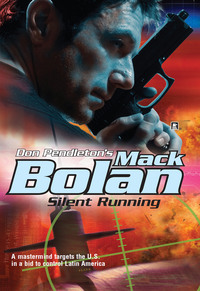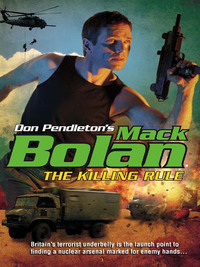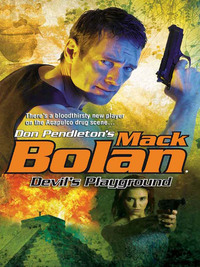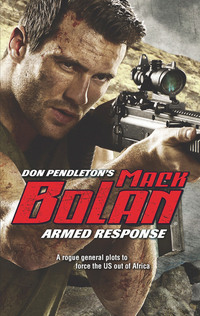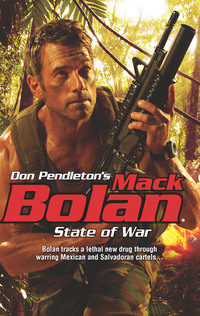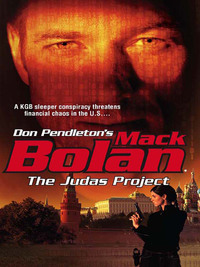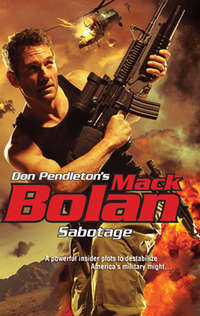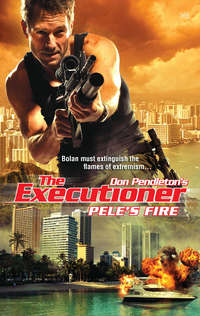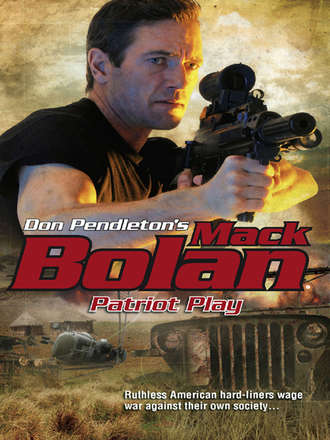
Полная версия
Patriot Play

Patriot Play
MackBolan®
Don Pendleton’s

www.mirabooks.co.uk
For those who fight the good fight
Special thanks and acknowledgment to Mike Linaker for his contribution to this work.
CONTENTS
PROLOGUE
CHAPTER ONE
CHAPTER TWO
CHAPTER THREE
CHAPTER FOUR
CHAPTER FIVE
CHAPTER SIX
CHAPTER SEVEN
CHAPTER EIGHT
CHAPTER NINE
CHAPTER TEN
CHAPTER ELEVEN
CHAPTER TWELVE
CHAPTER THIRTEEN
CHAPTER FOURTEEN
CHAPTER FIFTEEN
CHAPTER SIXTEEN
CHAPTER SEVENTEEN
CHAPTER EIGHTEEN
CHAPTER NINETEEN
CHAPTER TWENTY
CHAPTER TWENTY-ONE
CHAPTER TWENTY-TWO
CHAPTER TWENTY-THREE
CHAPTER TWENTY-FOUR
EPILOGUE
PROLOGUE
The Federal Reserve banks in Boston, Cleveland and Atlanta were the first to be hit, and the method for each assault was the same. Plain panel trucks were driven as close as possible to the buildings, then the drivers left the vehicles and walked to waiting cars. These vehicles drove away and, once clear, the large explosive bombs inside the panel trucks were detonated by remote control. The totally unexpected attacks on Federal Reserve buildings caught everyone by surprise. There was no kind of warning. No time to evacuate. The explosions were large and created serious damage to the exteriors of the buildings, despite the protective concrete barriers that had become part of city architecture. With each explosion the barriers were severely damaged, and the powerful blasts hurled deadly chunks and smaller fragments toward the buildings. Unknowing members of the public were caught in the horrific blasts and so were security personnel within the blast radius.
Boston had twelve dead, and twice that suffered serious wounding.
In the aftermath of the Cleveland attack the toll was higher. Fourteen dead and close to thirty suffered wounds that ranged from minor to critical.
Atlanta sustained twenty dead. The number of wounded totaled eighteen. The Atlanta dead included eight schoolchildren on a field trip.
All three blast sites were quickly cordoned off so that police and emergency services could gather evidence. The FBI and Homeland Security became initially embroiled in a territorial standoff in Boston. In the meantime the Atlanta Homeland Security team established a swift command center, and their preliminary examination of the epicenter of the blast revealed very little as to who might have been responsible. Twelve hours after the explosions there was little evidence coming from the three sites to enable any of the agencies to issue anything of value.
The remains of the panel trucks had been meticulously gone over by everyone involved—FBI, Homeland Security and the CSI teams from each of the three cities. The CIA ran checks to see if there were any similar scenarios. Nothing was found to link the vehicles to any organization or group. It was found that the license plates were phony, created for the job, as were the plates on the cars that picked up the truck drivers. Locating the escape cars proved to be futile. Again it was surmised that false plates were changed soon after the vehicles had fled the scene.
The panel trucks had been stripped down to the bare bones before setting out for the banks. The engines had been made so anonymous it was difficult to establish where they had come from in the first instance. They had been built from various spare parts and were not even the standard engines for the model of truck used. Someone had spent a great deal of time and effort to custom rig every part so there was little chance of identifying them. The effort expended on disguising the vehicles indicated intelligent thinking and a group with a sound financial base.
The explosives used to create the bombs carried by the trucks were identified as ammonium nitrate, an agricultural fertilizer that was available at hundreds of retailers across the country, and nitromethane, a highly volatile motor-racing fuel. The motor fuel, though not as common as a retail commodity, was available in large quantities. The mixture of the two elements was a familiar one to the FBI. Designated ANFO, it had been used before in the manufacture of explosives. The fragmented detonators, located after diligent searches and painstaking reconstruction, were also found to have been built by hand from raw materials. From the blast radius it was estimated that the bombs would have been in the region of three thousand pounds in weight.
Three days following the attacks on the FRB buildings, similar attacks took place in three more cities. This time, though the locations differed, the destruction was just as horrific. In Detroit, Newark and Norfolk, panel trucks in the parking lots of large department stores were detonated. The blasts tore up through the underground garages and caused the collapse of crowded shopping floors. There were more deaths and severe injuries. The subsequent investigations revealed identical vehicle and bomb specifications. As with the three original bombings, very little steady evidence emerged.
TEN DAYS LATER in Washington, The President of the United States dropped the last of the reports on the bombing incidents on his Oval Office desk and sighed wearily. His mood was a mix of anger and revulsion, and a growing frustration. Nothing he had read in the many documents even hinted at forward progress in the ongoing investigations. The only consistent theme running through the reports was the clashes between agencies: the disagreement when it came to sharing information, each agency jealousy guarding its own turf, reluctant to divulge sources and, maintaining policy, not trusting the others in case there were security leaks. The President made a mental note to once again instruct the groups to cooperate with one another, knowing even as he did that the complexity of the matter would only increase once the heads of the agencies dug in their heels. CIA, FBI, Homeland Security would all claim that sharing information was not a wise move because it jeopardized their sources and protocol demanded these remained within the particular departments of each agency. The same would be pleaded by other agencies and they would all climb on the same old carousel. They would quote precedents and legalities, the intrusion into human rights, losing sight of the big picture. Coupled to that was the increasing public clamor for the government to do something to stop the terrible events taking place. The media, the President’s detractors, even his staunchest political allies, were asking the same questions: what was the administration doing? Why hadn’t the people behind the attacks been tracked down?
Alone in his office the President was asking himself the same questions. In truth, he had no answer. If the combined agencies were unable to track down the callous murderers of U.S. citizens, where did he go? And if they came up with suspects? He knew the lengthy processes that would have to be gone through before anyone dared move on the evidence.
The President was left with his final card. It was one he had played on other occasions, when the lawful and traditional agencies found themselves facing a blank wall, and it had always returned him with a winning hand. America’s commander in chief saw his way clear. The people behind the attacks had showed they held themselves above both the law and had no conscience when it came to killing Americans on their own soil. They played by their rules, ignoring the suffering they caused and as yet had made no kind of statement as to why they were committing their evil acts. The President needed to counter the threat with his own force. A force that would play by their rules. He had no concerns about playing down and dirty. The people behind the attacks had set the agenda. Now they could reap what they had sown. The President’s duty was clear. He had to protect American lives, and at the moment he was failing to do that. It troubled him greatly. He grieved for the dead and their families and for the country he had sworn to defend. The time had come for decisive, no-wavering solutions.
The President picked up one of his telephones and punched in a number. He heard it ring out. It was answered immediately.
“Good morning, Hal,” the President said. “I need to speak with you urgently.”
CHAPTER ONE
Stony Man Farm, Virginia
Mack Bolan leaned back from examining the spread of photographs on the conference table. He had no words to express what he was feeling at that precise moment. At the head of the table Hal Brognola remained silent. There was no need for words. The stark reality of the images said it all. Men, women, and especially the children, spelled out the sheer horror that had been visited on them. Bolan forced his gaze from the photographs to look at the wall screens where video footage of the first three attacks was playing. Aaron Kurtzman, Stony Man’s chief of cybernetics, had obtained official footage taken by the FBI, CIA and HS. It was distressing video, not sanitized for TV news channels. The silent viewers in the War Room steeled themselves as the presentations rolled across the screens. This was not the first time Bolan and Brognola had watched this kind of graphic horror. They were both experienced in seeing the results of human atrocities, yet each new experience hit hard. Professionals they might have been, but foremost they were caring human beings, and the suffering inflicted on the dead and the injured would not be dismissed lightly, if at all.
“Aaron is still collating intel he’s gathered from various agency databases,” Brognola said. He was forced to clear his throat and repeat the latter part of his sentence as he was still affected by what he had been watching. “Jesus, Mack, who are these bastards?”
“We’ll find out, Hal.” Bolan was scanning the spread of images on the table.
“I can tell the Man you’re on board.”
Bolan nodded. “You can tell him that whoever these people are they’re the walking dead men. No compromises on this, Hal.”
“Amen to that,” Brognola said. “I got the distinct feeling that under all the protocol the President is well and truly pissed off.”
“TELL ME you’ve got something for me, Aaron.”
Kurtzman swung his wheelchair away from his workstation and rolled it across the Computer Room to his steaming coffeepot. He topped up his mug, taking a swallow of the rich brew before he spoke.
“You do realize just how much data I’ve had to go through to get your break? CIA. FBI. HS. Local PDs. Every damned security and law department offer different views. There’s more speculation than Imelda Marcus had shoes. And all I have to do is pick you somewhere to start.”
Bolan absorbed the minor rant with good grace. Aaron Kurtzman’s sardonic nature was ingrained. It was as much a part of the man as the coffee he imbibed in vast quantities. Grouchy he might be, but Kurtzman was the most skilled and professional cybertech Mack Bolan had ever known. He ran his department and his cyberteam 24/7 with consummate ease, though he liked to make out he was understaffed and denied access to quality equipment. The truth was, he had the best electronic data gathering and analytical setup in existence. On top of that he was the most accomplished computer expert around. He proved it each time he went to work, employing his own programs to take sneak-and-peek looks into data systems operated by the CIA, FBI, NSA and just about any agency that employed electronic systems. Kurtzman’s backdoor incursions were strictly illegal in the lawful world. That did not deter him in the slightest. Missions often depended on having up-to-the-minute data. Lives depended on Kurtzman accessing certain information, so his systems-breaking programs were vital.
“I couldn’t find much on the MO of the attackers. They did as much as they could to stay anonymous. No released statements claiming responsibility, which is highly unusual. One of the things these dirtbags love is saying who they are and why they did the deed. This is new. Publicity-shy terrorists.”
“There has to be a reason for that.”
“I wish I knew what.”
“Aaron, anything?”
Kurtzman grunted. He spun his chair to face his workstation, placed his coffee mug on its spot and ran his fingers over his keyboard.
“This,” he said.
On one of the larger monitors Bolan saw a blowup of a photograph that had been taken at some gathering in a large hall. On a raised platform a group of men were semi-posed as the picture was taken.
“We are looking at Jerome Gantz. Officially he’s a suspected bomb maker. Four or five years ago he was mixed up with various radical groups. The FBI tried to tie him in with a couple of bombings, but there was no real evidence and then someone handling the case screwed up and Gantz walked. Then he fell off the map. Most likely he hired out his skills but stayed out of sight. I was running some checks on current homegrown antiestablishment groups. I came across some press photographs, and there was Gantz. That’s him. The one losing his hair and talking to the tall guy in the business suit with the eye patch and limp arm.”
“Who is he?”
“The one who could make this our clincher,” Kurtzman said. “Liam Seeger.” He waited for Bolan to make a connection.
“Should I know Seeger?”
“If you’re into militia groups. Seeger is head honcho of…”
“The Brethren.”
“Give the man a prize.”
“How old is the photo?”
“Two months,” Kurtzman said. “Taken at a Brethren rally in Jersey City. Seeger made one hell of a speech tearing into the administration. He accused the government of being more concerned about interfering with foreign regimes than problems at home. He threatened a wakeup call that would show how ineffective the administration is. Something that would show Americans they needed to rethink who should be governing the country.”
“Gantz at Seeger’s rally. You tie that in to the recent attacks?”
“It was Gantz’s early bomb construction detail I remembered. Same mix as now. It was stated in FBI files that Gantz liked to make his own explosives. Ammonium nitrate and nitromethane. Designated ANFO. And background detail said he preferred to construct his own detonators. The FBI believed it was his signature.”
Bolan studied the images.
Jerome Gantz.
Liam Seeger.
The Brethren.
It read like an unholy Trinity.
Or was it a coincidence?
Bolan was not a great believer in chance favoring such a coming together. He did believe that the combination needed to be checked out, if only to eliminate them or to prove they were tied together.
“I’ll need everything you can get me on them,” Bolan said. “This is too much to ignore, Aaron. Have any of the other agencies flagged this yet?”
Kurtzman shook his head. “I pulled this together from different sources. Nobody picked it up because the agency types are playing true to form and not sharing information.”
“Keep it in-house for now. Give me a chance to go in without having to look over my shoulder. And in the meantime keep looking.”
“You’ve got it, Mack. Give me an hour to pin down locations and numbers. I’ll give you names to go with the faces in the picture, as well.”
IN HIS QUARTERS Bolan geared up, packing clothing in one bag and his weapons in a larger, leather holdall. He phoned Barbara Price and she set in motion orders for paperwork and credentials that would identify Matt Cooper as a Justice Department special agent. With Bolan’s alter ego already in the system it took only a short time for his package to be produced. He was on his way back from the armory, with extra clips of ammunition for his weapons, when Price intercepted him. She held a manila envelope out to him.
“Your secret agent kit, Mr. Cooper,” she said, falling in step beside him. “Tell me something—do you live up to your cover qualifications?”
Bolan smiled. “Miss Price, what do you think?”
“Me? Oh, above and beyond the call of duty from what I can recall.”
“Personal recommendations always welcome.”
Brognola was approaching from the other end of the corridor. “You two better come with me,” he said without a trace of humor.
Bolan fell in beside the big fed, Price close behind.
Brognola was fumbling in the pocket of his jacket, pulling out a pack of antacid tablets. He eased one from the pack and put it in his mouth, which meant he was fretting. He led them to Kurtzman’s Computer Room where the cyberteam was gathered at their boss’s workstation. There was someone else Bolan recognized—Carl Lyons, commander of Able Team.
As Bolan stepped up to the workstation Lyons glanced up.
“Carl.”
“Looks like I called in on a bad day,” Lyons said.
“This came in a short time ago,” Kurtzman told them.
On the wall monitor was a replay of an earlier TV report. The picture was of a fenced compound, identified by the rolling text at the bottom of the picture. It was a National Guard depot in southwest Arizona. The metal mesh gates had been breached and when the camera panned around it showed smoking buildings and bodies lying on the ground.
“Two of our anonymous panel trucks,” Brognola said, “drove in through the gates and up to the buildings. Only a four-man squad of National Guardsmen manned the site. When they confronted the trucks they were cut down by autofire. The panel trucks must have been left outside each of the storage buildings and set off remotely. Vehicles were stored inside one building. The second was the armory. Both were razed to the ground by the truck bombs. It’s already been established that the explosive used was the same as the previous attacks.”
“Makes you wonder where they’ll hit next,” Huntington Wethers said.
“Hard to figure,” Carmen Delahunt replied.
“Is there a deliberate plan to show they can go for anything they choose,” Brognola asked, “or are these just random hits?”
“Hey, look at this.”
They all turned at Akira Tokaido’s call. He indicated a TV news flash. Two more attacks had taken place at National Guard bases. One in Oregon, the next in Nevada. The strikes had the same MOs as the Arizona site.
“The only difference here is the fact they gunned down their victims rather than letting the bombs kill them,” Bolan said.
He turned to Price. “Is transport ready?”
“Mack,” Lyons said, “you got room for a partner?”
“Barbara, can you organize some more cover documents?” Bolan queried. “For both of us in case we need to stop anyone being nosy.”
“Go to it,” Brognola said. “Carl, you up for this?”
“Able’s on stand-down. I’ve nothing that can’t wait.”
“This could be a hot one.”
Lyons smiled. “You know how I hate the cold, Hal.”
CHAPTER TWO
Bolan was behind the wheel of the black Crown Victoria from the Farm’s motor pool. Lyons had the Stony Man file on his lap, going through the mass of documentation Kurtzman had prepared. He had been reading for the first hour of their drive, saying very little and falling silent as he went through the photographs of the bombing victims. Bolan left him to absorb the data until Lyons was ready to talk.
“The Brethren looks to be more organized than most groups. Upmarket compared to your usual militia-survivalist gathering.”
“Yeah. They have a lot to say. Their rallies pull in big crowds. Seeger is known as something of a recluse. He only shows his face in public at meetings, but he has his finger on the public’s pulse. He knows exactly what to say to get a positive reaction. From what Aaron dug up, the Brethren always come away with sizable cash donations.”
“I guess it has to be said there are a lot of unhappy people out there,” Lyons commented.
“We have dead and injured people now,” Bolan said, and left it at that.
Kurtzman’s data had provided them with a location for Jerome Gantz. The man hadn’t been active in the past few years. He’d either quit the anarchy business or he had simply been keeping his profile under the radar.
If Gantz hadn’t been building bombs, where did he get his money from? Kurtzman posed. According to his financial records, Gantz had been living on welfare and handouts—which wouldn’t enable the man to afford his current home. The cyber warrior vowed to dig deeper.
Gantz had rented a house on the Atlantic shore of Massachusetts just outside a small hamlet called Tyler Bay. The area was well off the main highway, a slumbering spot that once had a thriving fishing industry. Large fishing fleets now dominated the business. Over the more recent years Tyler Bay’s family-owned boats had failed to stand up to the competition. There were no more than half a dozen boats left. The town lived off the catches from the small fleet, tourism and associated businesses.
Bolan and Lyons arrived in midafternoon. The narrow road leading into the town brought them to a point overlooking Tyler Bay, which had an Old World charm to it. The road led through the town with a few cross streets intersecting.
“Nice enough spot if you want to stay hidden,” Lyons said.
Bolan didn’t respond. He drove the car down the slope that brought them into Tyler Bay along the main street. Beyond the town the Atlantic stirred restlessly. A steady breeze pushed the gray water toward shore, frothing whitecaps on the waves. Rooms had been booked for them at the Tyler Grand Hotel. It was set in the middle of town, on a cross street, and Bolan drove off the street and eased the vehicle into a slot on the hotel parking lot.
Misty rain was starting to drift in from the curving bay. When Bolan opened his door he felt the chill in the air. Lyons turned up the collar of his jacket and grimaced at his companion.
“I’ll take Malibu anytime,” he rumbled.
Bolan popped the trunk and removed his bag, slinging the one with their weapons over his shoulder. There was a second, smaller bag alongside Lyons’s, which held a big-screen laptop. They made their way to the front entrance and up the wooden steps leading inside. The lobby was spacious, and looked as if it came from an earlier era, but the bright-eyed young woman behind the desk was definitely from the twenty-first century.
“Welcome to the Tyler Grand, gentlemen. Would you be Mr. Cooper and Mr. Benning?”
“Yes, ma’am,” Lyons said, his mood lightening for the first time since leaving Stony Man.
The woman smiled. “Miss, actually.”
“Don’t mind him,” Bolan said. “He’s really just an old-fashioned boy.”
“Straight off the farm?”
“In a manner of speaking.”
The woman pushed the register across the desk for them to sign in. She watched Bolan sign and write Washington in the home column. Lyons did the same.
“Vacation?” she asked.
“We just needed to get out of the city,” Lyons said. He patted his bag. “And take some pictures and write an article on Massachusetts for our magazine.”
“Sounds interesting.”
“You’d be surprised how city dwellers enjoy reading about places like Tyler Bay.”
The woman handed them keys. “Really? Oh, nothing happens here. Now you go up the stairs to the first landing, turn left along the corridor. Is there anything you need?”
“Pot of fresh coffee for two would be nice,” Bolan said.
“I’ll have it sent up to your room, Mr. Cooper.” The woman found herself staring into Bolan’s blue eyes. A faint flush colored her cheeks for some reason. “About ten minutes? Will that be satisfactory?”




